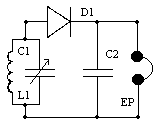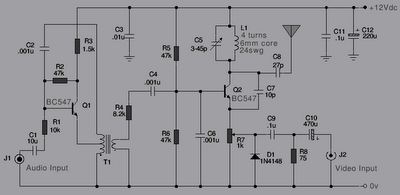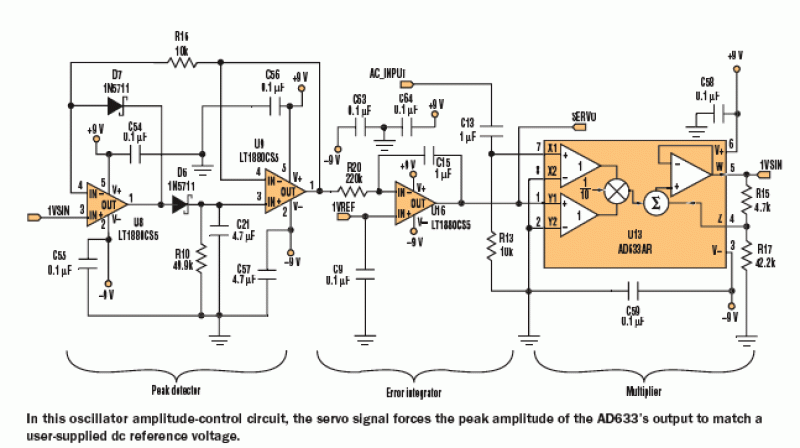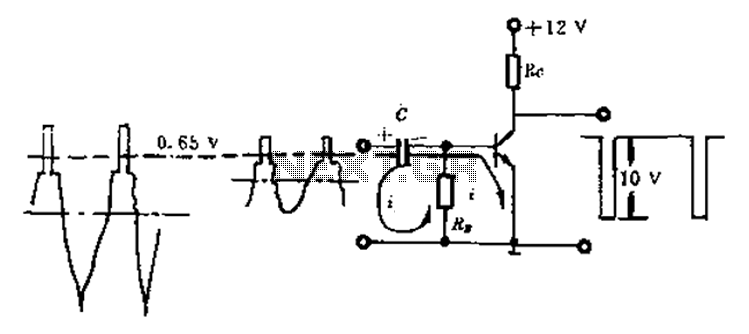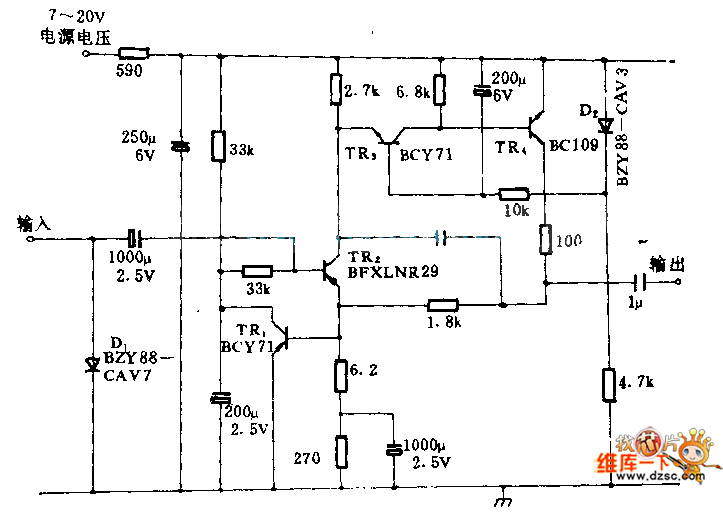
Amplitude modulation
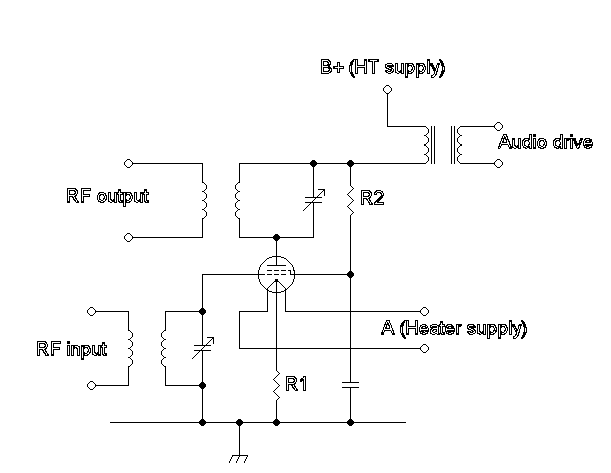
Amplitude modulation (AM) is a technique used in electronic communication, primarily for transmitting information via a radio carrier wave. AM operates by varying the strength of the transmitted signal in relation to the information being conveyed. For instance, changes in signal strength can specify the sounds produced by a loudspeaker or the light intensity of television pixels. This contrasts with frequency modulation, which varies the frequency, and phase modulation, which varies the phase. In the mid-1870s, a form of amplitude modulation, initially referred to as "undulatory currents," was the first method to successfully produce quality audio over telephone lines. Beginning with Reginald Fessenden's audio demonstrations in 1906, it was also the original method used for audio radio transmissions and continues to be utilized today across various communication forms. "AM" is often associated with the medium-wave broadcast band (see AM radio). In radio communication, a continuous wave radio-frequency signal, specifically a sinusoidal carrier wave, has its amplitude modulated by an audio waveform before transmission. In the frequency domain, amplitude modulation results in a signal with power concentrated at the carrier frequency and two adjacent sidebands. Each sideband has a bandwidth equal to that of the modulating signal and is a mirror image of the other. Amplitude modulation that produces two sidebands and a carrier is termed "double-sideband amplitude modulation" (DSB-AM). Amplitude modulation is inefficient in power usage; a significant portion of the power is concentrated in the carrier signal, which carries no useful information beyond indicating that a signal is present. To enhance transmitter efficiency, the carrier may be suppressed, resulting in a reduced-carrier transmission known as "double-sideband suppressed-carrier" (DSB-SC) signal. A suppressed-carrier AM signal is three times more power-efficient than standard AM. If the carrier is only partially suppressed, a double-sideband reduced-carrier (DSBRC) signal is produced. For reception, a local oscillator typically restores the suppressed carrier, allowing the signal to be demodulated with a product detector. Improved bandwidth efficiency can be achieved by completely suppressing both the carrier and one of the sidebands, leading to single-sideband modulation, which is widely used in amateur radio and other communication applications. A simple form of AM, often applied in digital communications, is on-off keying, a type of amplitude-shift keying where binary data is represented by the presence or absence of a carrier. This method is used by radio amateurs to transmit Morse code and is referred to as continuous wave (CW) operation. The carrier amplitude represents a constant that demonstrates the modulation index. The values A=1 and M=0.5 produce y(t), represented by the top graph labeled "50% Modulation." Thus, the modulated signal comprises three components: a carrier wave and two sinusoidal waves (sidebands) whose frequencies are slightly above and below the carrier. Setting A=0 eliminates the carrier component but retains the sidebands (DSBSC transmission). To generate a double-sideband full carrier (A3E) signal, specific choices must be made. For more general forms of m(t), trigonometric methods may not suffice; however, the top trace in Figure 2 depicts the frequency of m(t), while the bottom trace illustrates the modulated carrier. This has two components: one at a positive frequency (centered on +fc) and one at a negative frequency (centered on -fc). Each component includes the two sidebands and a narrow segment in between, representing energy at the carrier frequency. Since the negative frequency is a mathematical artifact, examining the positive frequency reveals that an AM signal's spectrum consists of its original (two-sided) spectrum, shifted to the carrier frequency.
In electronic communication systems, amplitude modulation serves as a foundational technique for transmitting audio and data signals over various media. The modulation process involves the superimposition of an audio signal onto a high-frequency carrier wave, facilitating the transmission of information across long distances. The carrier frequency is selected based on the communication requirements, ensuring that it falls within the appropriate frequency band for the intended application, such as AM radio broadcasting.
The modulation index, defined as the ratio of the amplitude of the modulating signal to the amplitude of the carrier signal, plays a crucial role in determining the extent of modulation and the resulting signal's quality. An optimal modulation index ensures clear signal transmission while minimizing distortion. The presence of sidebands in the modulated signal is critical, as they carry the actual information being transmitted. The bandwidth of the modulated signal is determined by the frequency components of the modulating signal, with the total bandwidth being twice the highest frequency of the modulating signal.
In practical applications, AM systems utilize various components, including oscillators, amplifiers, and demodulators. The oscillator generates the carrier wave, while the modulator combines the carrier with the audio signal to produce the modulated output. Amplifiers are employed to boost the signal strength for transmission, and demodulators at the receiver end extract the original audio signal from the modulated carrier.
Furthermore, advancements in technology have led to the development of more efficient modulation techniques, such as single-sideband modulation, which reduces bandwidth requirements and improves power efficiency. This is particularly beneficial in environments with limited bandwidth or where power conservation is essential, such as in satellite communications and military applications.
Overall, amplitude modulation remains a vital technique in electronic communications, providing a reliable means of transmitting information across various platforms while continually evolving to meet modern communication challenges.Amplitude modulation (AM) is a technique used in electronic communication, most commonly for transmitting information via a radio carrier wave. AM works by varying the strength of the transmitted signal in relation to the information being sent.
For example, changes in signal strength may be used to specify the sounds to be reproduced by a loudsp eaker, or the light intensity of television pixels. Contrast this with frequency modulation, in which the frequency is varied, and phase modulation, in which the phase is varied. In the mid-1870s, a form of amplitude modulation ”initially called "undulatory currents" ”was the first method to successfully produce quality audio over telephone lines.
Beginning with Reginald Fessenden `s audio demonstrations in 1906, it was also the original method used for audio radio transmissions, and remains in use today by many forms of communication ”"AM" is often used to refer to the mediumwave broadcast band (see AM radio ). In radio communication, a continuous wave radio-frequency signal (a sinusoidal carrier wave ) has its amplitude modulated by an audio waveform before transmission.
In the frequency domain, amplitude modulation produces a signal with power concentrated at the carrier frequency and two adjacent sidebands. Each sideband is equal in bandwidth to that of the modulating signal, and is a mirror image of the other.
Amplitude modulation resulting in two sidebands and a carrier is called "double-sideband amplitude modulation" (DSB-AM). Amplitude modulation is inefficient in power usage; at least two-thirds of the power is concentrated in the carrier signal, which carries no useful information (beyond the fact that a signal is present).
To increase transmitter efficiency, the carrier may be suppressed. This produces a reduced-carrier transmission, or DSB "double-sideband suppressed-carrier" (DSB-SC) signal. A suppressed-carrier AM signal is three times more power-efficient than AM. If the carrier is only partially suppressed, a double-sideband reduced-carrier (DSBRC) signal results.
For reception, a local oscillator will typically restore the suppressed carrier so the signal can be demodulated with a product detector. Improved bandwidth efficiency is achieved at the expense of increased transmitter and receiver complexity by completely suppressing both the carrier and one of the sidebands.
This is single-sideband modulation, widely used in amateur radio and other communications applications. A simple form of AM, often used for digital communications, is on-off keying : a type of amplitude-shift keying in which binary data is represented by the presence or absence of a carrier.
This is used by radio amateurs to transmit Morse code and is known as continuous wave (CW) operation. represents the carrier amplitude, which is a constant that demonstrates the modulation index. The values A=1 and M=0. 5 produce y (t), depicted by the top graph (labelled "50% Modulation") in Figure 4. Therefore, the modulated signal has three components: a carrier wave and two sinusoidal waves (known as sidebands ), whose frequencies are slightly above and below The choice A=0 eliminates the carrier component, but leaves the sidebands (DSBSC transmission).
To generate a double-sideband full carrier (A3E) signal, we must choose: For more general forms of m(t), trigonometry is not sufficient; however, if the top trace of Figure 2 depicts the frequency of m(t) the bottom trace depicts the modulated carrier. It has two components: one at a positive frequency (centered on + ‰c) and one at a negative frequency (centered on ’ ‰c).
Each component contains the two sidebands and a narrow segment in between, representing energy at the carrier frequency. Since the negative frequency is a mathematical artifact, examining the positive frequency demonstrates that an AM signal`s spectrum consists of its original (two-sided) spectrum, shifted to the carrier frequency.
🔗 External reference
In electronic communication systems, amplitude modulation serves as a foundational technique for transmitting audio and data signals over various media. The modulation process involves the superimposition of an audio signal onto a high-frequency carrier wave, facilitating the transmission of information across long distances. The carrier frequency is selected based on the communication requirements, ensuring that it falls within the appropriate frequency band for the intended application, such as AM radio broadcasting.
The modulation index, defined as the ratio of the amplitude of the modulating signal to the amplitude of the carrier signal, plays a crucial role in determining the extent of modulation and the resulting signal's quality. An optimal modulation index ensures clear signal transmission while minimizing distortion. The presence of sidebands in the modulated signal is critical, as they carry the actual information being transmitted. The bandwidth of the modulated signal is determined by the frequency components of the modulating signal, with the total bandwidth being twice the highest frequency of the modulating signal.
In practical applications, AM systems utilize various components, including oscillators, amplifiers, and demodulators. The oscillator generates the carrier wave, while the modulator combines the carrier with the audio signal to produce the modulated output. Amplifiers are employed to boost the signal strength for transmission, and demodulators at the receiver end extract the original audio signal from the modulated carrier.
Furthermore, advancements in technology have led to the development of more efficient modulation techniques, such as single-sideband modulation, which reduces bandwidth requirements and improves power efficiency. This is particularly beneficial in environments with limited bandwidth or where power conservation is essential, such as in satellite communications and military applications.
Overall, amplitude modulation remains a vital technique in electronic communications, providing a reliable means of transmitting information across various platforms while continually evolving to meet modern communication challenges.Amplitude modulation (AM) is a technique used in electronic communication, most commonly for transmitting information via a radio carrier wave. AM works by varying the strength of the transmitted signal in relation to the information being sent.
For example, changes in signal strength may be used to specify the sounds to be reproduced by a loudsp eaker, or the light intensity of television pixels. Contrast this with frequency modulation, in which the frequency is varied, and phase modulation, in which the phase is varied. In the mid-1870s, a form of amplitude modulation ”initially called "undulatory currents" ”was the first method to successfully produce quality audio over telephone lines.
Beginning with Reginald Fessenden `s audio demonstrations in 1906, it was also the original method used for audio radio transmissions, and remains in use today by many forms of communication ”"AM" is often used to refer to the mediumwave broadcast band (see AM radio ). In radio communication, a continuous wave radio-frequency signal (a sinusoidal carrier wave ) has its amplitude modulated by an audio waveform before transmission.
In the frequency domain, amplitude modulation produces a signal with power concentrated at the carrier frequency and two adjacent sidebands. Each sideband is equal in bandwidth to that of the modulating signal, and is a mirror image of the other.
Amplitude modulation resulting in two sidebands and a carrier is called "double-sideband amplitude modulation" (DSB-AM). Amplitude modulation is inefficient in power usage; at least two-thirds of the power is concentrated in the carrier signal, which carries no useful information (beyond the fact that a signal is present).
To increase transmitter efficiency, the carrier may be suppressed. This produces a reduced-carrier transmission, or DSB "double-sideband suppressed-carrier" (DSB-SC) signal. A suppressed-carrier AM signal is three times more power-efficient than AM. If the carrier is only partially suppressed, a double-sideband reduced-carrier (DSBRC) signal results.
For reception, a local oscillator will typically restore the suppressed carrier so the signal can be demodulated with a product detector. Improved bandwidth efficiency is achieved at the expense of increased transmitter and receiver complexity by completely suppressing both the carrier and one of the sidebands.
This is single-sideband modulation, widely used in amateur radio and other communications applications. A simple form of AM, often used for digital communications, is on-off keying : a type of amplitude-shift keying in which binary data is represented by the presence or absence of a carrier.
This is used by radio amateurs to transmit Morse code and is known as continuous wave (CW) operation. represents the carrier amplitude, which is a constant that demonstrates the modulation index. The values A=1 and M=0. 5 produce y (t), depicted by the top graph (labelled "50% Modulation") in Figure 4. Therefore, the modulated signal has three components: a carrier wave and two sinusoidal waves (known as sidebands ), whose frequencies are slightly above and below The choice A=0 eliminates the carrier component, but leaves the sidebands (DSBSC transmission).
To generate a double-sideband full carrier (A3E) signal, we must choose: For more general forms of m(t), trigonometry is not sufficient; however, if the top trace of Figure 2 depicts the frequency of m(t) the bottom trace depicts the modulated carrier. It has two components: one at a positive frequency (centered on + ‰c) and one at a negative frequency (centered on ’ ‰c).
Each component contains the two sidebands and a narrow segment in between, representing energy at the carrier frequency. Since the negative frequency is a mathematical artifact, examining the positive frequency demonstrates that an AM signal`s spectrum consists of its original (two-sided) spectrum, shifted to the carrier frequency.
🔗 External reference
